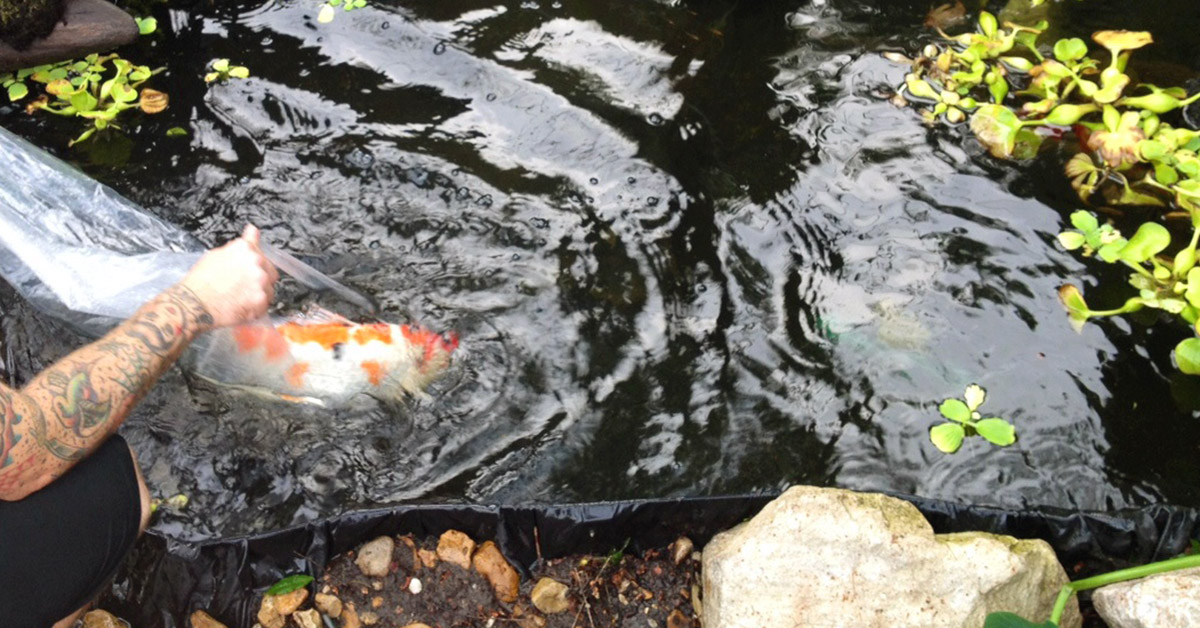
Is Your Garden Affected by Old Pond Syndrome? Signs to Look For.
If you are transporting koi or introducing them to a new environment, it is essential to ALWAYS follow strict quarantine measures. that protect your koi and help in preventing koi fish death. This article will help explain the OPS (Old Pond Syndrome) phenomenon.
Quarantining includes steps to intermingle new and old koi, that allow them to become accustomed to the possibility of new pathogens and allow their bodies to develop immunity.
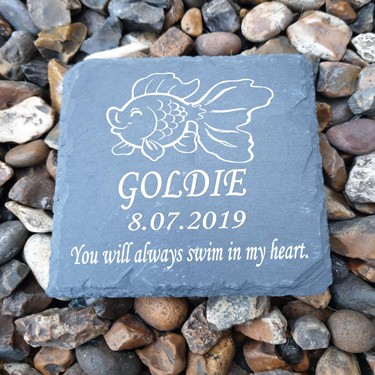
Pet Fish Plaque – Source
Unfortunately, even the most seasoned koi experts have had unexplained tragedies…
The shock of losing a favorite or a highly anticipated new arrival is exacerbated by the confusion.
How can anyone feel safe moving forward if they don’t understand what happened, or have any ideas about how to tackle it in the future?
Based on our experiences, we have some ideas, and we hope they help us all move forward as a community. Please comment at the bottom with any solutions for preventing or fixing OPS that you have tried.
So You’re Older Koi Appear to Die Randomly?
On occasion a client may introduced new Koi to their pond and they notice the older ones start dying one by one.
To be specific, this commercial client of ours had several high class beautiful ponds, with many beautiful Japanese Koi and had obtained Koi from us at Kodama Koi Farm about 5 years ago to fill a new pond. These Koi grew beautifully and the client loved it, and the client soon wanted to stock another pond with Koi from us.
There were already many healthy Koi in a pond, that was impeccably cared for. We shipped about 5 boxes of Koi and they introduced them to the pond.
But soon after, Koi started dying one after another with no reason. Even stranger, only the old ones died…
As another example, we know another gentleman who has been in the Koi hobby for over 10 years. He started his pond with high quality Tosai koi from Japan. Now they are grown big. As happens in life, he had lost a few Koi in the pond. He had not bought Koi for many years, but now, he felt he wanted to add some more. So he did it. He bought several Koi from Kodama Koi Farm and introduced them to his pond.
After a few weeks of the new introductions, all the old Koi in the pond started dying one by one. But nothing seemed to affect the new Koi—they ate and swam normally.
In both cases, the owners were very surprised. As Koi experts, they were not used to losing Koi. They were also shocked to see how many they lost in a relatively short time. After careful deduction, and no other apparent signs of major koi diseases, they both believed the new Koi must have introduced a sickness.
We at Kodama Koi Farm take Koi health very seriously, so we checked and double checked Koi for signs of disease, including Koi Herpes Virus. Careful examination did not reveal anything out of the ordinary.
Old Pond Syndrome Cases are Rare
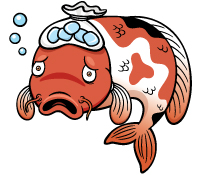
Being in business for almost half a century in Japan as well as in the US, we have seen many pond and Koi accidents. What appears to have happened in these cases is known as Old Pond Syndrome (OPS).
Old Pond Syndrome does not happen often, but we have seen or heard these cases at least a few times a year. There is surprisingly little information about OPS out there, so we hope to keep you informed.
In the case OPS does arise, we are here to help you identify it and create a preventative plan, as well as an easy to understand plan of action.
Seasonal Tips to Avoid Old Pond Syndrome in Your Backyard Oasis.
 When a pond is isolated for so many years, it builds its own ecosystem. Koi keep eating, growing and being healthy, but they are not exposed to any new pathogens, so their immune system starts to get lazy.
When a pond is isolated for so many years, it builds its own ecosystem. Koi keep eating, growing and being healthy, but they are not exposed to any new pathogens, so their immune system starts to get lazy.
Then, when new Koi are introduced, the older Koi begin to get sick and may die because of their weakened immune systems. This rare situation is known as Old Pond Syndrome. In some cases you may see new Koi die, but mostly we see this with older koi dying.
This is true for all creatures, including humans.
Even if we are very healthy, when we travel to a new country we often fall ill as our body tries to understand and deal with local bacteria. As children, we know that it is important to allow kids to be introduced to the outside world and other people slowly, so their bodies have time to take each new threat and deal with it.
Adding too many new koi too quickly leads to severe sickness and even death.
New koi are like foreign travelers, even if the ponds are not countries apart. The unique and isolated way a pond operates, means bacteria evolve more quickly than they do on land.
In both the above stories, the common thread is that the ponds had not been exposed to new Koi for many years, and a new addition of Koi caused the older ones to pass on due to Old Pond Syndrome.
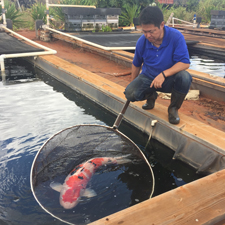
Preventative Measures for Old Pond Syndrome: Keeping Ecosystems Healthy.
Nothing is more devastating than losing Koi that you have loved for so many years.
Although there are no ultimate solutions yet, there are several recommendations that I can think of to minimize the risks.
Here are a few solutions to prevent Old Pond Syndrome and keep a thriving Koi population:
ONE SOLUTION: Introduce New Koi to Your Pond Every Year
How to treat Old Pond Syndrome in koi.
We should not keep our pond isolated from the outside world for too long.
Getting a new Koi and introducing it to your pond every year or two max, will help your Koi stay immune to anything new.
Since it has not been too long, the bacteria will not be so different. Your koi should be able to maintain a robust immunity. Be sure to quarantine properly and refer to proper procedures for koi care after receiving.
REMEDY: For Ponds or Fish That Have Been Isolated
For this issue, we do not have a large body of data to turn to. If you have an older pond, or want to acquire fish from an older pond, this theory should help.
We can tackle and hopefully solve this with more study and information sharing.
As humans, we have developed vaccines to help children build immunity. We also use this strategy for people traveling to a new country where their immune will be subjected to various new bacteria and viruses.
The inoculation introduces a small amount of a weakened pathogen and allows the body to develop its strategy to fight without getting overrun. Obviously, though, we cannot create custom vaccines for each individual pond ecosystem. I am thinking that the best way to imitate this is with the following plan to simulate a vaccine.
In theory this model works, but could be risky: The following could be a helpful suggestion to try, but unless you really trust the pond owner, it could bring a whole new level of issues with new water, plus bringing in new water constantly is not easy. Keeping old Koi with their pond water is fine, if you can not bring in new pond water.
Steps for Quarantine Test Vaccine Model:
- Take the fish from the old pond
- Move them to a quarantine tank with mostly water from the old pond
- Introduce a small amount of new pond water—the slower the better.
- Experiment by starting with just 10-15% new pond water. Give them a week.
- If you see the Koi get sluggish, then they probably are fighting something.
- Allow them to recuperate before adding more water.
- Slowly increase to 25-30% new pond water, then 50%, then potentially 100%.
I would guess the longer your Koi have been secluded, the longer the introductory process.
Take care to observe your Koi at every introduction. As you gather more data you will get a clearer picture on how long is really needed to introduce them. The overall purpose is to slowly introduce new elements to the koi that have been in the same water to build up immunity slowly, while not overloading their systems as happens when a new koi enters the main pond.
ALWAYS: Expose New Koi Gradually Using Quarantine
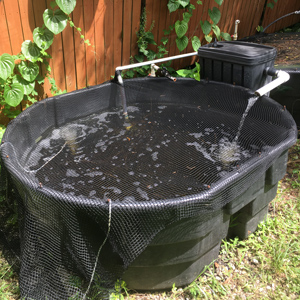 You’re ready for new Koi, but your pond hasn’t introduced new fish in a long time. What should you do? While I do not yet have a specific answer, here are my suggestions to minimize risk:
You’re ready for new Koi, but your pond hasn’t introduced new fish in a long time. What should you do? While I do not yet have a specific answer, here are my suggestions to minimize risk:
Do not introduce many new Koi all at once. First start with introducing one new Koi to a pond and see if there is any reaction.
Better yet, I would prepare a quarantine tank. Place one of the old Koi and one new Koi together in the quarantine tank and see how it goes.
This way, I will gradually let both Koi expose to one another little by little.
Do not introduce many new Koi all at once.
This minimizes Koi diseases from being passed from the new fish to the old fish.
How Many Years Without Adding New Koi is Too Long?
There is no specific answer for this question on how long until OPS is a problem.
There simply is not enough data. It all depends on your Koi and environment. My feeling is 3 years. If your pond is isolated for 3 years, I feel you should be more careful with new koi.

How Else Can I Treat My Koi’s Illness?
Old pond syndrome is just one of the possible scenarios that lead to Koi death.
Learn more in our Koi diseases help guide and see the many reasons for sudden large scale loss including parasites, insufficient dissolved oxygen, and Koi Herpes Virus.
The first thing you need to do is to stay calm. Please do not panic. Next, find and consult your local fish vet or trusted Koi dealers and seek advice.
Looking for more information for keeping your Koi healthy and thriving?
See our other resources:
- Diagnosing Sick Koi
- How to Use Koi Quarantine Tank
- Nitrogen Cycle to Maintain Healthy Koi Pond Water

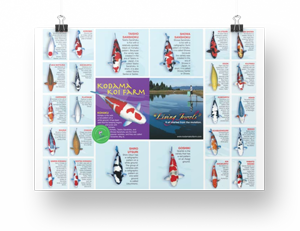

Very good and interesting – I would not have thought of koi immune systems getting “lazy!”
Thank you for leaving your comments.
Hi I brought 6 new koi carp and introduced to my pool with in a week and a harf I lost two of carp and three new carp I was in formed to add oyster shells in a onion bag in to flowing water and do a 10 present water change every other day is this correct and why is this problem not put out their for everyone to now about it
Kind regards mr ireson
Hi mr ireson hear again since my last report I have found that I now do a 15 to 20 % water change every third day has stoped the problem of OPS happening for me I have since brought three new koi at a time and added straight to my pond with no signs of OPS happening
Regards mr ireson
I’m going through this process currently. Steve from Sacramento Koi has been a God-send! I just bought my home last May. I’ve renovated most of the house and the neglected pond that I inherited in the purchase. I have 9 Koi and some are over 30 years old. They are big, healthy, and beautiful. My fan tailed platinum is over 3 feet long. The problem is, there have been no addition of new Koi in perhaps 15 or 20 years. The pond has 6 different kind of koi. I naively went to Sacramento Koi to buy 2 nice Kohaku since I didn’t have that type in the pond and I quite like their coloration. Steve took the time to get to know me and my pond. When he discovered that no new koi have been introduced in perhaps decades, he explained OPS to me. In my case, we have decided use one of the old koi from my pond as a guinea pig or sacrifice. Steve followed me to my home, captured the sacrificial koi, and took it to his store. My Koi was placed in one of his tanks with several Koi from the group I wish to purchase. We determined this was the only safe way to proceed. I would be devastated to lose all my beautiful “inherited” koi… that have lived so very long in harmony.
Thank you for leaving your comments. Yes, Mr. Steve from Sacramento Koi is a very good Koi dealer.
I have 5 koi (20-24″) on my small pond (1500 gal), and I don’t think that I can add a new one without starting to cross the line in the overstock zone… What can I do to avoid this kind of problem?
Hi I think your pond needs to be extended for the amount of fish you have is not suitable to add more fish
I have 10,000 gallons pond with a lot of fish
4 month ago I added six large new one
All of them died
Two weeks ago, I added 70 cm butterfly Koi also not doing well
Would you know what’s going on?
we lost our 4 large 15 year old koi last nightalong with 5 3 year olds from natural birth in the pond..one survived so far…we are totally shocked by this..could it be OPS..do you think?? no new koi have been introduced for quite some time…..thank you.
Hi:
We took all the fish (small about 1″ and larger of about 6″ proportion of 10:10) from actual pond and placed them in a wheelbarrow while we changed the pond liner for a new one and clean the plants pots.
They did very well for two days in the wheelbarrow. Once the work was finished we transferred a few to the cleaned pond and suddenly they started to die.
The ones left in the wheelbarrow are well and alive. At this moment we do not know what to do. We are afraid to loose all of them if we place them in the pond.
Thanks